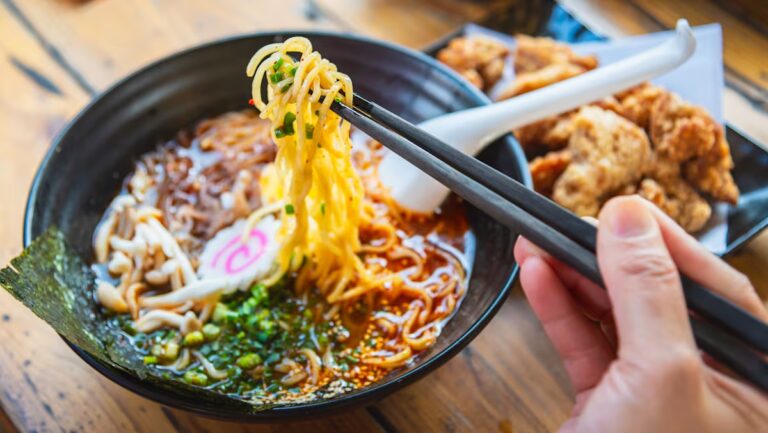“The risk of dying from such diseases increases from the time you consistently make unhealthy lifestyle habits, such as eating poorly. We have to eat every day. Therefore, the quality of your diet is highly impactful on your health outcome.”
If you want to indulge, keep it to once or twice a month, suggested Reutens. Looi recommended balancing your bowl of ramen with lower-sodium, nutrient-dense choices over the week. “Those with high blood pressure or other heart issues should be especially cautious and consult their healthcare provider.”
WHAT’S IN YOUR BOWL?
Let’s take the typical bowl of tonkotsu ramen for example: Yellow noodles, two char siew slices, two fish cake slices, half an onsen egg, and vegetables such as spinach, bamboo shoots, black fungus or bean sprouts.
They can all add up to 900 to 1,200 calories, depending on the broth’s richness, said Reutens. Your bowl will also contain 80g to 90g carbohydrates, 40g to 45g protein, 50g to 60g fat, and insignificant amounts of potassium and zinc. “Traditional ramen is laden with calories and fat with very little fibre, vitamins and minerals,” she said. “It’s worse when you imbibe while slurping your noodles. “There will be way too many calories from just one meal.”
If you, like me, have been weaned on a diet of Japanese shows romanticising the creation of ramen (hello, Tampopo) – and think that the robust flavours come from simmering pork bones for hours, you’ve got another thing coming.
The slow cooking part is accurate but guess where all the flavour and richness are coming from? Fat. “There’s also the addition of some soy sauce and salt,” said Reutens. “Tonkotsu ramen can contain shockingly, 2,000mg to 3,000mg of sodium. Given that our recommended daily intake for sodium is 2,000mg, you’re better off leaving half the broth behind.”
Images are for reference only.Images and contents gathered automatic from google or 3rd party sources.All rights on the images and contents are with their legal original owners.

